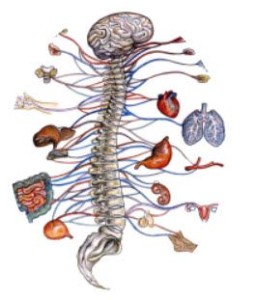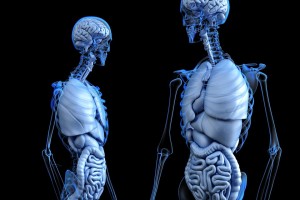Chiropractic clinical case histories have been a regular feature of our patient newsletter since its inception. There seems to be no limit to the health problems that respond to chiropractic care. How many people suffering, on drugs, facing a life of limitation could be helped by chiropractic care? Probably most of them.
Bed wetting in 17-year-old 
A 17-year-old male presented for a chiropractic consultation and possible care with his parents. He was complaining of low back and upper back pain. The patient’s pain complaint was attributed to sports injury from hockey. However, he mentioned that he also suffered from chronic nocturnal enuresis (bed wetting) since early childhood. When he would go to sleepover he would have to wear Pull-Ups® but they would soak through during the night.
Medical care and acupuncture were ineffective for addressing his bed wetting. He was cared for with various types of chiropractic techniques to reduce his vertebral subluxations – especially to C-1 (atlas), T-10 and sacrum.
After his 12th visit, he acknowledged that he did not have any wet nights since starting chiropractic care. He had a total of 24 visits over a four-month period. He was free of all his back pain by the 12th visit. (1)
Seizures in a 15-month-old.
A 15-month-old male infant had a traumatic birth including Cesarean section and epidural. At six months of age he had his first seizure. He experienced another one eight months later and began to experience two to three seizures a week, each one lasting one to two minutes.
When the child was 15 months old his parents brought him in for chiropractic care. Chiropractic adjustments were directed at subluxations of the cranium and all areas of the child’s spine. The child had 17 visits over the period of eight months. The child’s seizures completely resolved. (2)
Dizziness, neck pain and headaches in a 44-year-old woman. 
A 44-year-old woman with a three-year history of dizziness, neck pain and headaches, which began immediately after a motor vehicle accident, presented for chiropractic care. She was stopped at a red light and struck from behind. She suffered with vertebral subluxations, vertigo, facet syndrome with ligament sprain and tendon strain, as well as headaches. These are common whiplash symptoms.
Chiropractic care was used where indicated to correct the subluxations that were found. The patient was also advised to do balancing and vision exercises.
Her symptoms markedly decreased, including the frequency and duration of her vertigo with a significant improvement in balance measurements, in addition to the decrease in severity of her neck pain and headaches. The patient’s frequency of vertigo went from a nightly occurrence, lasting anywhere from five minutes to three hours, to once a week lasting no more than five minutes. (3)
- Shtulman I, Miller H, Alcantara J. Resolution of nocturnal enuresis, dysponesis & dysautonomia in a 17-year-old male following chiropractic care for vertebral subluxation. Journal of Pediatric, Maternal & Family Health, Chiropractic. December 10, 2018:155-160.
- McCauley N. Resolution of chronic seizures in an infant undergoing chiropractic care for vertebral subluxation: a case report and review of the literature. Journal of Pediatric, Maternal & Family Health, Chiropractic. December 27, 2018:161-164.
- Coppus JA. Resolution of vertigo, neck pain & headaches following chiropractic care: a case study & review of the literature. Annals of Vertebral Subluxation Research. January 10, 2019:1-9.










